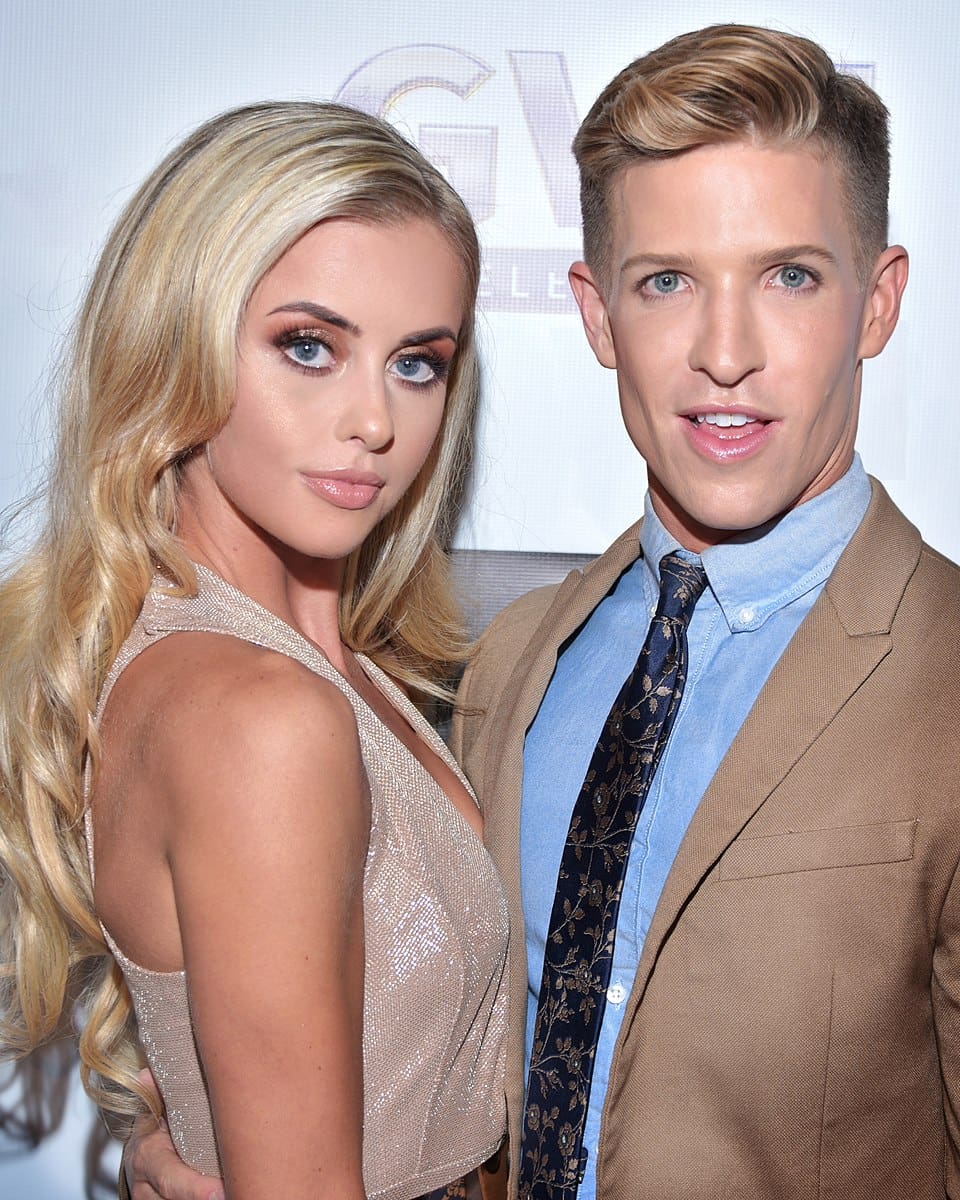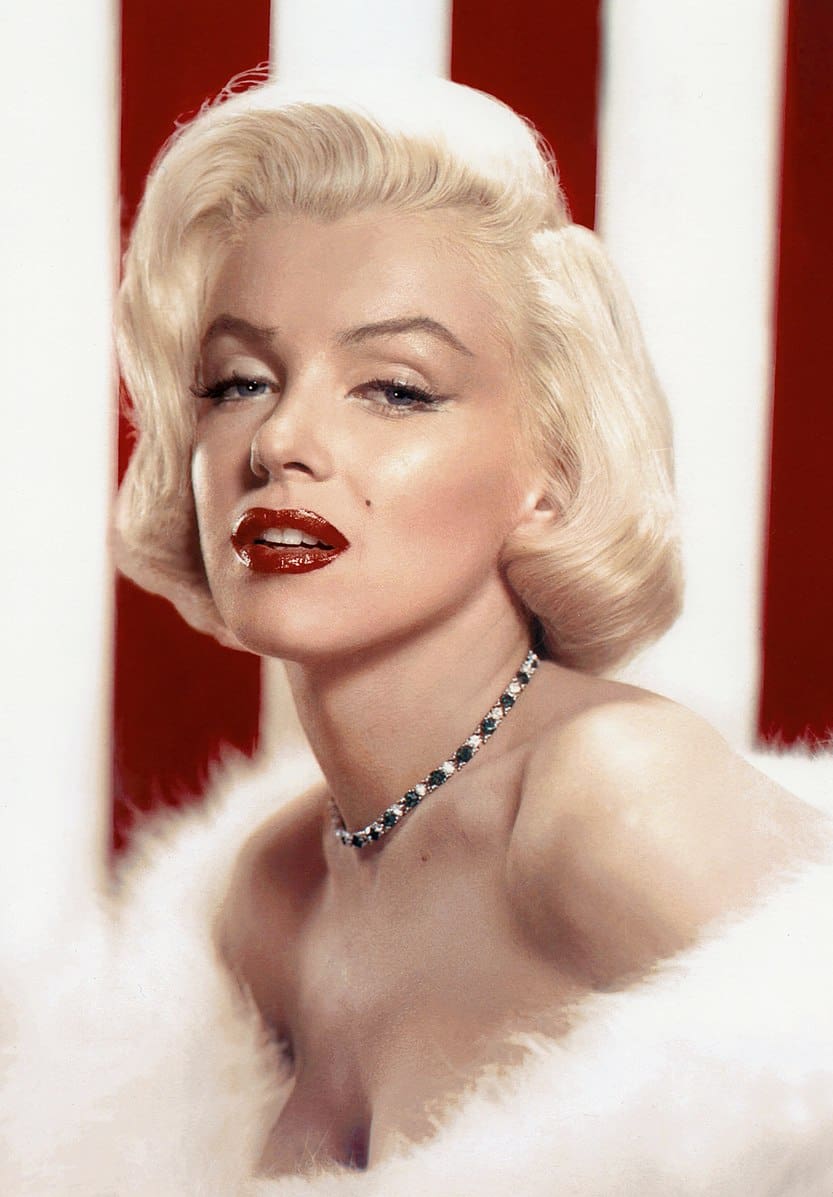20 Facts About the Science Behind Blonde Hair
With its alluring charm, blonde hair reflects an intriguing nexus of identity, society, and science. Examining the complex world of blonde hair reveals a range of biological processes and social views. Blonde hair is a symbol of the complexity of human variation, from the genetic foundations that determine its colours to the historical and cultural connotations that influence its importance. In this investigation, I reveal 20 fascinating details that shed light on the scientific complexities of blonde hair, providing an understanding of its historical significance, genetics, evolution, and enduring appeal.
1 Blonde hair is a result of low melanin in the hair shaft

A woman with blonde hair. Lily from Tallinn, CC BY 2.0, via Wikimedia Commons
The characteristic colour of blonde hair is caused by a low level of the pigment melanin in the hair shaft. The pigment known as melanin, which is generated by melanocytes in hair follicles, is what gives hair its various shades. Melanocytes produce less melanin in blondes, especially eumelanin, which is the darker pigment seen in black and brown hair. Rather, blondes have higher pheomelanin concentrations, which result in red and yellow colours. The bright, golden tones that define blonde hair are the outcome of this mixture. Because there aren’t any appreciable amounts of melanin in the hair, light can pass through it more readily, giving the illusion of lighter hair.
2 Genetics contribute to having blonde hair
Genetics has a major influence on hair colour, even blonde hair. The cells called melanocytes, which produce the melanin pigments in hair follicles, are influenced by genetic variations in their activity. The kind and quantity of melanin generated are determined by genes; pheomelanin produces reddish and blonde tones, while eumelanin produces darker tones like black and brown. Melanin synthesis and dispersion depend heavily on several genes, including TYRP1, ASIP, and MC1R. Blonde hair is among the several colours that might result from mutations or polymorphisms in these genes. The variety of blonde hair types found in human cultures is a result of the interaction of several different hereditary factors.
3 2% of the world population is blonde
Although many people today find blonde hair attractive and appealing, it is actually relatively uncommon among the world’s population. Of the 7.8 billion people on the planet, just roughly 2% are naturally blonde. Northern and eastern European nations have the highest proportions of naturally blonde-haired people, especially among Scandinavian and Germanic ethnic groupings. This is probably due to evolutionary causes because in areas with less sunlight, having lighter hair made it easier to produce enough vitamin D. Natural selection gradually widened the gene pool in these groups to include the uncommon characteristic of blonde hair. True blonde hair is still quite rare, occurring in 10–20% of most people even in Europe. Blonde hair is not as common as black, brown, or red hair all over the world.
4 There are different shades of blonde

A picture of a blonde man and woman. Toglenn, CC BY-SA 4.0, via Wikimedia Commons
There is a vast range of colours of blonde hair, from golden and strawberry tones to platinum and ash blondes. Different ratios of the two forms of melanin pigment; eumelanin and pheomelanin, lead to the particular tint. Pheomelanin generates lighter red and blonde colours, while eumelanin produces darker brown and black hues. Lighter blonde hues are produced by higher pheomelanin than eumelanin concentrations. Platinum blondes are more pheomelanin-rich and have very little eumelanin. More proportionally balanced golden blondes are darker. Even strawberry blonde, which is a combination of red and blonde hair due to a higher percentage of red pheomelanin and a lower amount of dark eumelanin, is regarded as a type of blonde hair.
5 Many Scandinavian people are blonde
Up to 80% of adults in Scandinavian nations like Sweden, Norway, and Iceland are naturally blonde, making them among the world’s most blonde-haired countries. In Iceland, for instance, almost 77% of adult women are naturally blonde. The high frequency of blonde hair in Scandinavia is said to have developed as a result of natural selection in the Northern European environment. Despite decreased levels of sunshine, skin and hair follicles produced more vitamin D when pigmentation was lower. Because of this evolutionary advantage, the genes causing blonde hair have multiplied in Scandinavian people over the course of several generations, with the majority of blonde hair now found in the Nordic region.
6 Blonde hair is thinner

Blond hair. Lily from Tallinn, CC BY 2.0, via Wikimedia Commons
The thinner texture of blonde hair is caused by a reduced melanin concentration. In addition to giving hair colour, melanin fortifies its structure. Blonde hair isn’t as strong as darker hair because it has less pigment. Because of its smaller diameter, blonde hair seems less voluminous and is more brittle. This fragile trait may also be further exacerbated by shorter growth stages in blonde hair follicles. The benefit is that the air pockets inside these tiny strands give blonde hair its characteristic sheen and translucency. Recall that hair health is also very important, so taking good care of your hair may help keep even finer blonde hair looking its best.
7 The gene responsible for blonde hair originated in Northern Europe
The genetic mutation that gives people their blonde hair is said to have started during the last ice period in northern Europe. A particular OCA2 gene variation was found to decrease the production of melanin, leading to lighter hair colour that might have been useful in areas with little sunlight. Natural selection allowed this mutation to proliferate because lighter hair promoted the synthesis of vitamin D, which in turn led to enhanced survival and success in reproduction.
As genes were passed down through the generations, this allele for blonde hair grew concentrated in populations of northern Europe over thousands of years. According to modern genomic analyses, individuals derived from ancient northern Europeans, such as the Scandinavians, have greater frequencies of the mutant OCA2 variation, which accounts for their increased prevalence of blonde hair today.
8 Blonde hair darkens over time
Being blonde can make one a chameleon. Although heredity is a major component, its shade can also be affected by ageing, hormones, and sun exposure. Melanin production is boosted by sun exposure, which may eventually cause blonde hair to turn darker. Even in non-blondes, pregnancy-related hormones like oestrogen can have an impact on hair colour and occasionally cause temporary whitening. Melanin production naturally declines with age, occasionally resulting in greying that gives previously blonde hair a whitening effect. Your blonde hair may therefore change over time, but that’s all part of their amazing journey.
9 Blonde hair is associated with lighter eye colour

A girl with blonde hair and blue eyes. D. Sharon Pruitt from Hill Air Force Base, Utah, USA, CC BY 2.0, via Wikimedia Commons
Due to genetic similarities, blonde hair is frequently linked to light eye colours like blue or green. Many genes, including those involved in the synthesis and dispersion of melanin, are involved in the genetics of eye colour. Melanin levels in the irises and hair of those with lighter hair colours, such as blondes, are often inferior. This may lead to a greater frequency of blue or green eyes in people with blonde hair. There is a great deal of variation, though, and individuals with blonde hair and darker eye colours can exist. This is due to the intricate interaction between hereditary variables that affect the pigmentation of both the hair and the eyes.
10 Chemical treatments for blonde hair
Using hair dye chemicals to lighten, improve, or retain blonde tones is a common chemical treatment for blonde hair. These procedures frequently involve the use of hydrogen peroxide or other bleaching agents to remove the hair shaft’s present pigment and make room for the application of a new colour. To get their ideal blonde look, people may choose highlights, lowlights, balayage, or full-colour applications, depending on their personal tastes and the condition of their hair. To maintain healthy, vibrant blonde hair, it’s crucial to remember that regular chemical treatments can harm the structure of the hair and cause problems like dryness, breakage, and brittleness.
11 Blonde hair is associated with youth
Blonde hair is sometimes connected to youth and innocence. People’s hair naturally darkens with age because melanin production increases with age. As adults, a lot of naturally blonde people will turn brunette or have darker hair with grey undertones. Given that lighter hair is associated with youth, both men and women frequently colour their hair blonde in an effort to look younger and more radiant as they age. The misconception of “dumb blondes” also associates innocence and ingénue charm with lighter hair. For these reasons, people who want to look younger often lighten their hair, either to cover up grey hair or because they think blonde hair goes better with their personality. Blonde dye aids in recapturing the energy that naturally lighter hair embodies.
12 Blond hair is not linked to intelligence
Science has not discovered any real connection between natural blonde hair colour and IQ, despite the pervasive “dumb blonde” mockery in the media and society. Melanin content and genetics, not intelligence, determine blonde hair. Multiple studies evaluating IQ and hair colour have decisively demonstrated that natural blondes have the same distribution and range of IQ scores as the general population, despite the persistence of unjust preconceptions in society. An individual’s financial condition, education level, and opportunities are significantly more significant indicators of intellect than merely possessing blonde hair genes. The “dumb blonde” stereotype is not grounded in reality; rather, it is a kind of prejudice without any scientific evidence. The natural colour of someone’s hair does not necessarily indicate intelligence.
13 Celebrities who have blonde hair

A picture of Marilyn Monroe. Studio publicity still, Public domain, via Wikimedia Commons
Many well-known celebrities who portray themselves as blonde bombshells actually have naturally dark brown or black hair that they lighten. Despite not being naturally blonde, celebrities like Gwen Stefani, Marilyn Monroe, and Kim Kardashian are all well-known for their striking blonde appearances. While Kardashian and Stefani both had dark hair, Monroe was a brunette. To get the desired glamorous image, these superstars lightened their hair; Marilyn Monroe’s platinum-dyed hair became a legend. The deception draws attention to how phoney the Hollywood image may be. Although many people still aspire to have blonde hair, because it is so uncommon, even celebrities with blonde hair typically achieve it through bleaching and colouring rather than heredity. These blond figures’ real-life counterparts show a lot about the ideals of blondes in society.
14 Blonde hair became popular in the 17th and the 18th Century
Blonde hair became a prominent fashion trend among European nobles and the elite in the 17th and 18th centuries. Due to the perception that persons with lighter hair stood out from the crowd, blonde wigs and hair-lightening procedures were more popular. In an effort to seem young and ethereal, royalty like Queen Elizabeth I contributed to the rise in popularity of coloured blonde hair. Rich women used homemade bleaching solutions to lighten their hair, and wearing blonde wigs was considered a status symbol. The upper classes caught on to the trend. Though most couldn’t naturally pull it off, having blonde hair was a sign of affluence. During this historical time, the relationship between blonde hair, femininity, and high social standing arose, impacting beauty standards for decades to come.
15 Women with blonde hair start greying early
Compared to women with dark hair, individuals with naturally blonde hair typically begin greying earlier in life. Blonde women frequently see their first grey hairs in their 20s or even late teens, while most people start to go grey in their mid-30s and 40s. Because blonde hair naturally has less eumelanin and less pigment, it greys earlier than other hair types. Because melanin production declines with ageing, greys become more apparent in blondes. For brunettes, the change usually happens more gradually. Even though premature greying can be upsetting, a lot of blondes decide not to dye their hair in order to embrace their silvery strands early. The alteration illustrates how, independent of an individual’s actual age, hair colour reflects ageing and melanin levels.
16 Blondes in literature
Blonde characters frequently represent a variety of issues and qualities in literature. They can evoke ideas of morality and beauty by symbolising innocence, purity, and freshness. Blonde characters are often important characters in stories; they might be protagonists or represent particular stereotypes. Their representation has the power to communicate cultural norms and societal standards related to femininity and desirability. Furthermore, depending on the setting of the story, blonde hair in literature might be connected to ideas of enlightenment, change, or even otherworldliness. Blonde characters and their hair colour are used by authors to explore complicated themes pertaining to identity, power relations, and societal expectations, as well as to enhance the story and generate contrasts.
17 Blonde hair and gender

A man with blond hair. User:Pja25, Public domain, via Wikimedia Commons
Although blonde hair is typically associated with femininity, men can also have blonde hair. Many males naturally have blonde hair because of genetic causes, despite the fact that cultural prejudices may emphasise blonde as a feminine attribute. Blonde men frequently have to deal with cultural expectations and perceptions, which can change depending on the culture and setting. Despite being represented differently from their female counterparts in the media and in advertisements, blonde men nevertheless add to the variety of ways that people with blonde hair are portrayed. The prevalence of blond men subverts gender stereotypes and draws attention to how complexly societal views of masculinity and femininity are shaped by hair colour.
18 There are alternative blonding products that do not have chemicals
Although bleach is frequently used to artificially lighten hair, there are other products that brighten hair strands optically without utilising harmful chemicals. Rather than eliminating pigment from the hair, some blonding agents operate by adding microscopic pigment molecules to the hair. By reflecting light, these optical brighteners give the appearance of lighter, glossier hair. Alternatives to aggressive bleaching include using substances like hydrogen peroxide to gradually lift colour over time. To brighten hair, activated charcoal, lemon, or chamomile can also be added to dyes with lightening properties. Natural solutions are more time-consuming, but they do not have the drying or irritating effects of frequent bleaching.
19 Blonde hair and research
The goal of blonde hair genetics research is to understand the intricate interactions between genes that control hair colour. Researchers look at the precise genetic variants linked to blonde hair, including the function of genes that produce melanin and how they interact with one another. Through population genetics and genome-wide association studies, scientists investigate the role that specific genetic markers play in the characteristics associated with blonde hair in various groups.
Population dynamics, migratory patterns, and the evolutionary history of blonde hair can all be better understood by knowing the genetic foundation of the hair colour. Furthermore, forensic genetics and personalised medicine may benefit from new understandings gained from genetic studies. Current research endeavours to further enhance our comprehension of the genetic pathways.
20 Blonde hair is not exclusive to humans

A picture of a bull with blonde hair. Beautiful long-haired blonde by James Allan, CC BY-SA 2.0, via Wikimedia Commons
Although blonde hair is frequently seen on human heads, it is not unique to us. The magnificent lion’s mane displays a sun-kissed blonde, a representation of strength and nobility. The playful cubs of the Amur tiger have light stripes on their orange coats, which help them blend in with the snow before they attack their unwary prey. Even the cute Arctic fox disguises itself in frigid environments by donning a thick coat of white. These blond animal ambassadors demonstrate the various ways in which nature uses this alluring hair colour, demonstrating that beauty knows no boundaries.
Planning a trip to Paris ? Get ready !
These are Amazon’s best-selling travel products that you may need for coming to Paris.
Bookstore
- The best travel book : Rick Steves – Paris 2023 – Learn more here
- Fodor’s Paris 2024 – Learn more here
Travel Gear
- Venture Pal Lightweight Backpack – Learn more here
- Samsonite Winfield 2 28″ Luggage – Learn more here
- Swig Savvy’s Stainless Steel Insulated Water Bottle – Learn more here
Check Amazon’s best-seller list for the most popular travel accessories. We sometimes read this list just to find out what new travel products people are buying.










